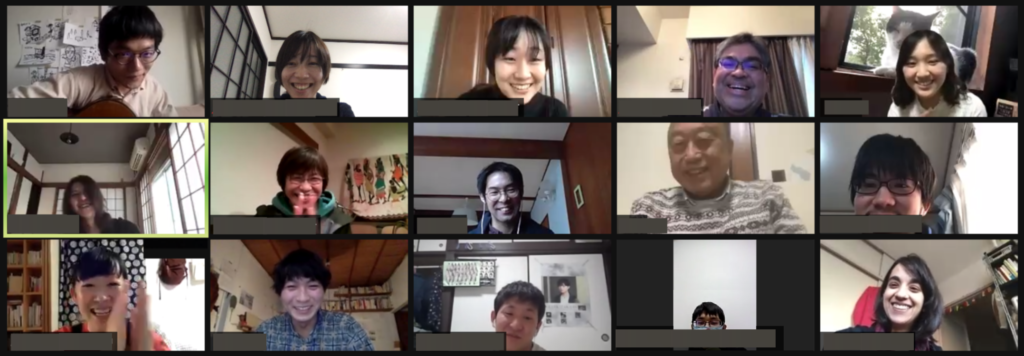FY2020 saw the implementation of the TURN LAND’s “Machi ni Derunba”(“Get out onto the streets”) project, in which “art explorer” Tappei Noguchi used Dandan as a base to go out into the neighborhood, sharing, accumulating and developing awareness and insights into the new functions and possibilities of the area.
Here we report on the first “Machi ni Derunba” session held in September, 2020 and the February 2021 online event “Machi ni Derunba ni aidea o Noserunba”(“Come out with ideas for “Get out onto the streets””).
■ “1st Machi ni Derunba” (Sunday, September 9, 2020)
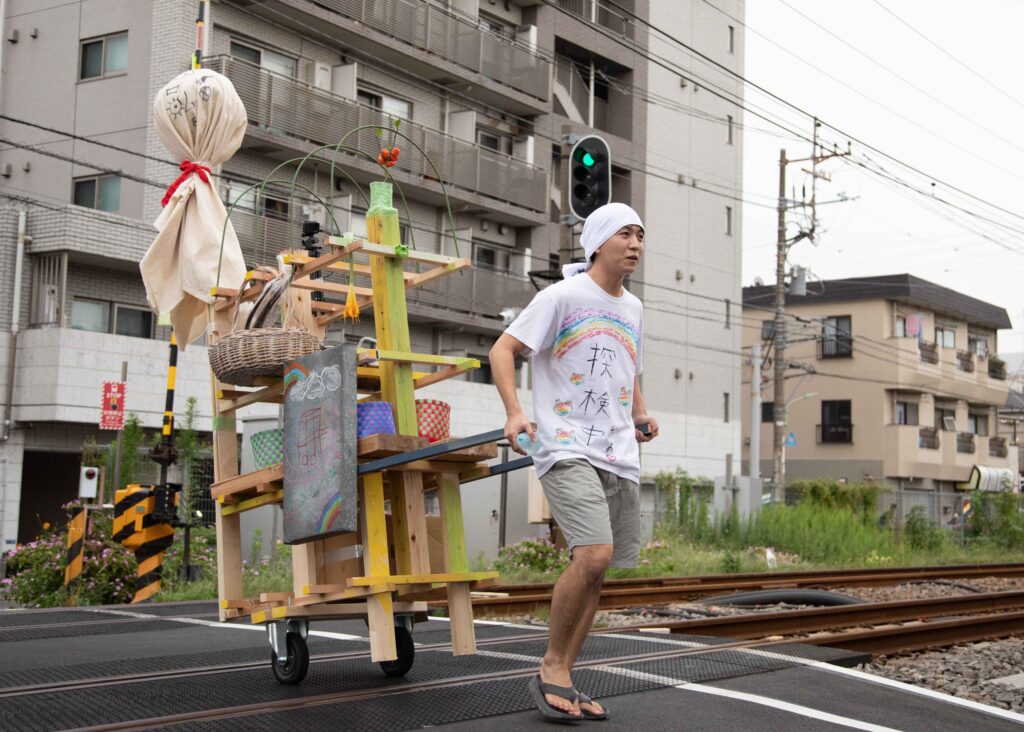
Using Dandan as a base, for the 1st “Machi ni Derunba” Noguchi took a customized hand cart “Derunba” out onto the streets.
First up was a group work session with online participants, to think about decorations for “Derunba” and rules for Noguchi to follow whilst walking around the streets.
Each group of online participants discussed topics such as the design of the face on the Teruteru bozu doll (a traditional good weather charm) to be attached to the cart, and what Noguchi should say whenever he went over a railway crossing, each relaying their ideas to Noguchi at Dandan.
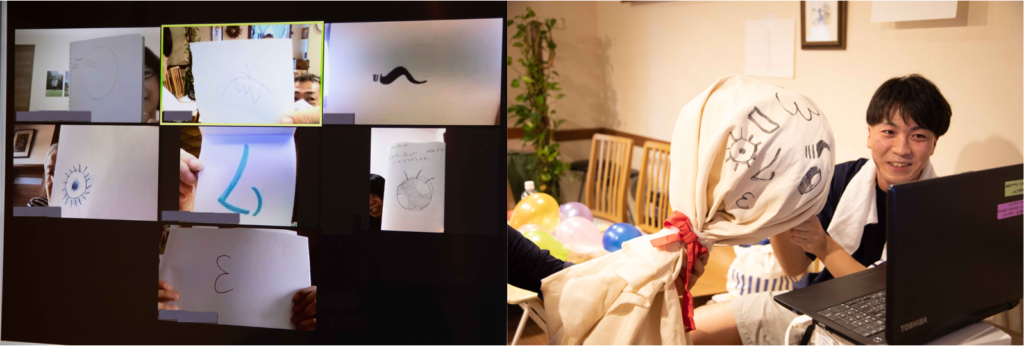
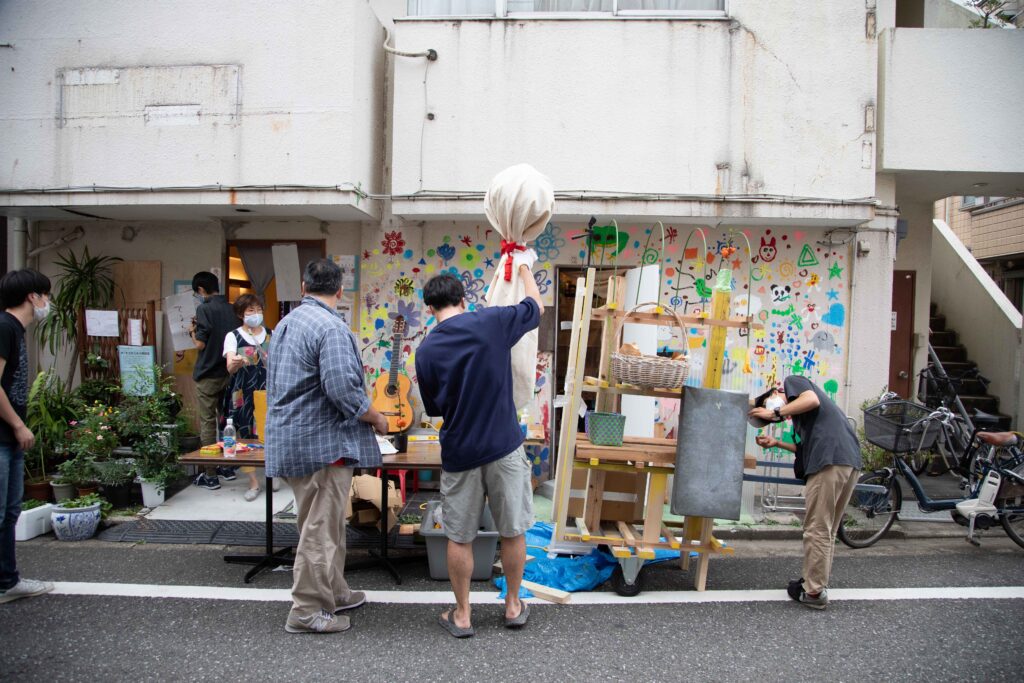
After finishing decorating the “Derunba” based on the participants’ input, Noguchi sets off around the neighborhood!
A camera attached to the cart allows him to stay connected with participants in real time as he walks around the neighborhood.
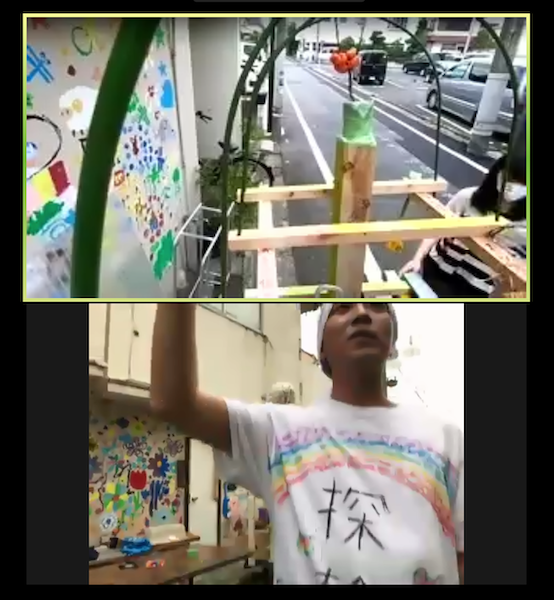
As Noguchi took the cart around, he experienced many simple encounters and exchanges, such as local people talking to him, giving him things, etc. As he walked around, every three minutes he yelled “Feeling super good!” in line with the rule for his neighborhood walk as decided together with participants.
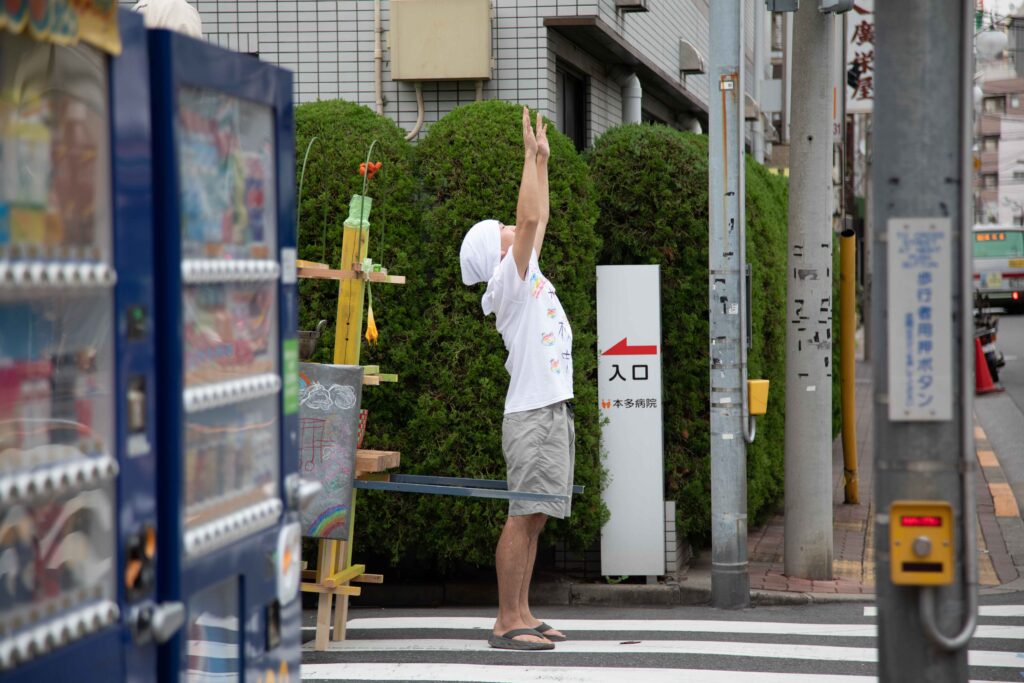
Participants were able to watch the proceedings online and enjoy a vicarious experience of Noguchi’s walk via live coverage by “pedestrian street researcher” Kohei Uchiumi, who helped make the hand cart, and Dandan owner Hiroko Kondo.
Moreover with the help of the images seen on their screens, participants kept a record of Noguchi’s walking route and things that interested them along the way. Each participant kept their own distinctive and individual record, with some drawing maps based on Noguchi’s travel route, others sketching objects of the same color, etc.
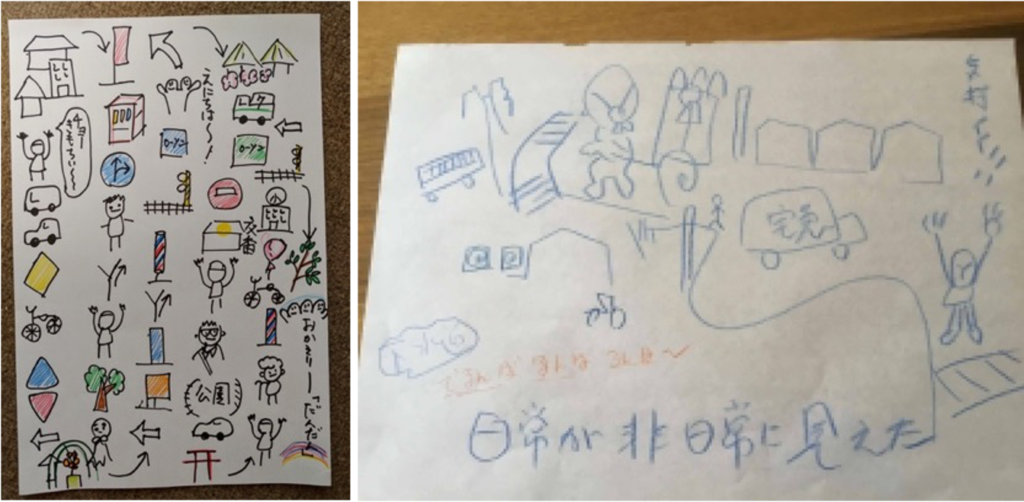
“Machi ni Derunba” threw up plenty of discoveries, such as how shouting the watchword in unison for times when Noguchi walked over a railway crossing helped participants feel as if they were walking around the neighborhood with him; and how the reactions of people he met differed depending on what he said and how he said it. Participants’ comments included “Familiar scenes looked different,” and “The camera made me feel like as if I was walking together.”
■ “Machi ni Derunba ni aidea o Noserunba”(“Come out with ideas for ‘Get out onto the streets’”) (Saturday, February 13, 2021)
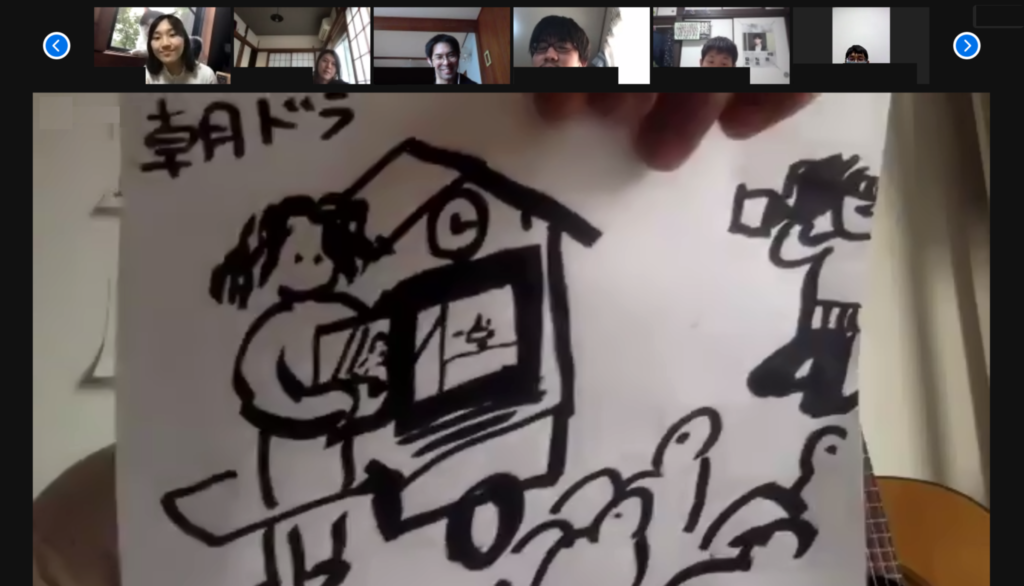
On this day, in order to prevent the spread of COVID-19, the idea of setting out into the neighborhood was abandoned. Instead, an event entitled “Machi ni Derunba ni aidea o Noserunba” saw Noguchi and project participants brainstorming ideas online regarding what might be achievable in taking a hand cart around the streets, and what sort of cart would be able to generate a connection with the neighborhood.
The event kicked off with Noguchi relating the incident that triggered his interest in the idea of a hand cart.
One day along the Futako-Tamagawa river he encountered a homeless man whose habitual dwelling had wheels attached to it. Noguchi was flabbergasted when the man told him it wasn’t a permanent structure but a hand cart for mobile abode. This experience of an assumption of his turning out to be something different is what led him to focus on the idea of a hand cart. The project was also launched as a way of using a hand cart to open Dandan to the community, as Kondo the owner of Dandan had mentioned she thought it was nice when florists sold flowers from hand carts and that one day she’d like to do something similar with her vegetables.
The workshop that followed was themed “Creating one of a kind Dandan customized hand cart”. In groups one person expressed a wish, and the rest of the group brainstormed ideas on how that wish could be realized using a hand cart. The group then gave the person who expressed the wish their suggestions – realistic or not – and based on those suggestions, that person then drafted some ideas on how to attain their dream through the use of the hand cart.
Each group then presented their ideas.
For example, one participant’s wish that they could appear in an “asadora” (a well-known 15-minute TV drama format shown on weekday mornings) generated the idea of setting up a hand cart so that they could do a Kamishibai(“paper story-telling”) dramatization of their life in 15 minutes and appear in an “asadora” as a venerable old lady character of the sort that often features in the shows. In another example, somebody said they would like children to experience the taste of real food, and the others in the group came up with the idea of turning the cart into a vegetable patch and growing vegetables from seeds for children to eat.
It was a session that produced numerous incredible ideas triggered by the dreams and wishes of participants, and a feeling of the potential for the hand cart and the future development of the “Machi ni Derunba” project.
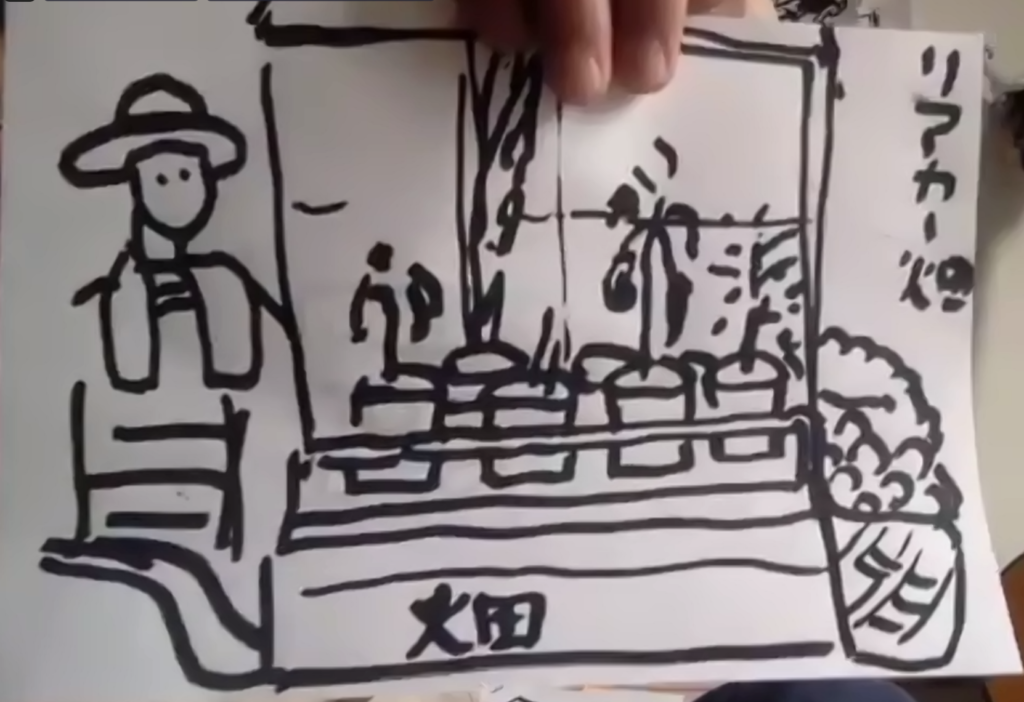
*Click here for more details on report on the workshop
Participants commented, “I was happy to get people’s suggestions regarding my wish. It was a lot of fun.” Illustrations drawn by Suzuki during the event are planned to be archived online at a later date. Watch this space!
